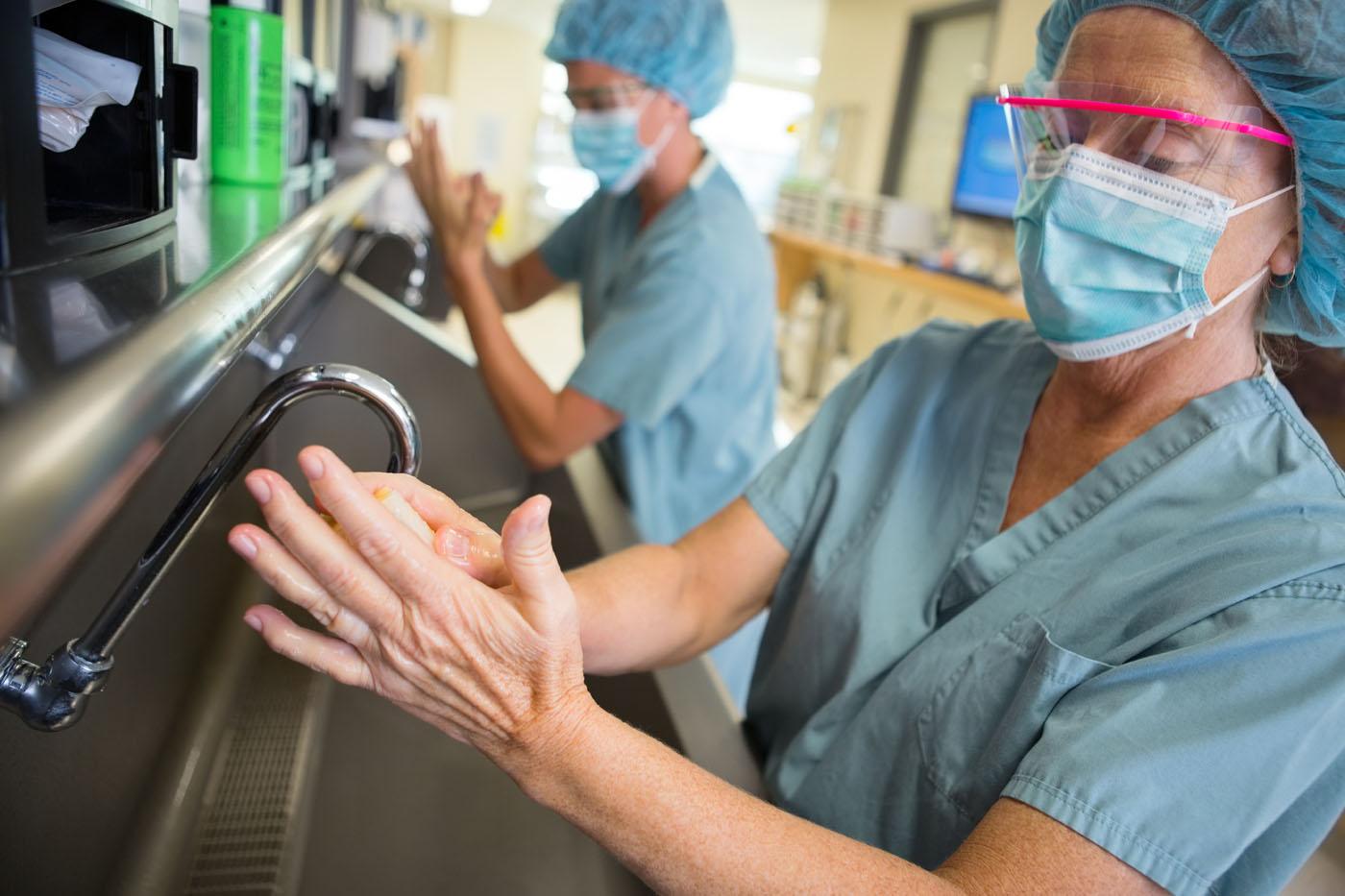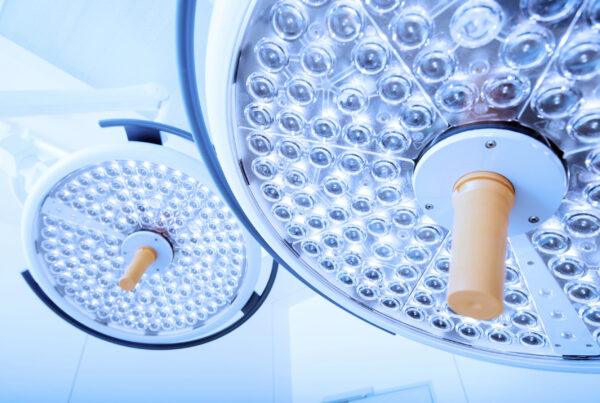Relations between the OR and the sterile processing department (SPD) are not always smooth. OR staff need timely, accurate instrument trays that meet the highest standards of safety. Anything short of 100% performance leads to complaints about the SPD.
But many OR staff members do not appreciate the challenges faced by sterile processing. In most hospitals, the SPD handles a huge volume of surgical instruments on a daily basis. Staff receive little support in terms of training and other resources, and managers must contend with high turnover.
How can surgical services leaders improve sterile processing efficiency, productivity, and accuracy? Recently, team members from Surgical Directions discussed the problems that lead to poor SPD performance. Surgical Directions is a Chicago-based perioperative consulting firm that includes experienced sterile processing leaders. According to these experts, most SPDs have reasonably effective processes and workflows. The real opportunities to improve performance are in better communication, education, leadership, and teamwork.
Engage OR staff
In many hospitals, OR staff are quick to express dissatisfaction with the SPD. However, at least some sterile processing problems originate in the OR.
“What often happens is that nurses will open up five or six trays for a case, but they will not put every instrument back in the tray it came from,” says Patricia May, BSN, RN, CNOR, senior nurse specialist at Surgical Directions. “After those trays go through washing and disinfection, SPD staff find instruments that don’t belong in a tray or trays that don’t have all the instruments they need.”
Extra instruments are set aside. Meanwhile, incomplete trays go back to the OR. “This reinforces a self-perpetuating problem,” May says. “When an incomplete tray goes up to the OR, nurses start opening peel packs to find the instruments they need. That creates twice as much work for the SPD.”
This process also increases materials costs as the SPD eventually accumulates a large inventory of unmatched instruments.
The solution is to make sure OR nurses and surgical technologists (STs) recognize that they have a role in sterile processing workflows. According to AORN, preparation for decontamination is to begin at the point of use.
Educate SPD team
“In many hospitals, the educational piece is completely lacking,” says John Wheeler, MBA, BSN, RN, consultant at Surgical Directions. “There is no set program for training SPD staff and no dedicated educator.”
New hires generally learn the job from existing staff. They pick up department processes, but do not gain an understanding of the purpose of various instrument sets or how they are used.
“With the complicated instrumentation of today’s technology, SPD staff really need to understand the theory behind what they are doing,” Wheeler says. He and OR business performance May recommend three strategies for building the sterile processing team’s knowledge base:
- Expose SPD staff to the OR. Let SPD team members observe surgical cases and see how instruments are actually used. This exercise can help SPD staff understand the importance of tray accuracy. It can also underscore the importance of instrument inspection (for instance, why a nicked rongeur will cause problems during neurosurgery).
- Bring OR staff to the SPD. Ask OR service line experts to provide in-service instruction to SPD staff. These sessions can provide the sterile processing team with more indepth explanations of various procedures and instrument sets. They also give SPD staff the chance to ask specific questions about points they do not understand. Surgical technologists can be a great resource. “The whole function of the surgical technologist is to maintain the sterile field with correct instrument sets,” May says. “They can be very helpful in working with the SPD to make sure trays are accurate—because when an instrument is missing, the ST is the one who has to tell the surgeon.”
- Invest in SPD certification. Wheeler encourages hospitals to support professional certification for SPD staff. Allocating budget for staff certification will not only increase staff knowledge, it can also help reduce labor costs.
“Turnover is a big problem in most SPDs. You may spend a year or two training an employee, but then they find a job that pays a little more and they’re gone,” Wheeler says. “As a manager, you can make the case that certification is an investment in your people that will help put a stop to the constant revolving door.”
Invest in materials
Inadequate instrument inventories create some inefficiencies. Consider what happens when SPD staff identify a damaged or malfunctioning instrument. If the repair budget is not available, the instrument may simply be removed from use. Alternatively, the instrument will be sent out for repair, but there may not be a replacement on hand to complete the set. Both scenarios increase the likelihood that the SPD will ship an inaccurate instrument tray.
The solution is financial. The hospital must allocate dollars to ensure timely instrument repair and an adequate replacement stock.
Holding extra inventory in sterile processing can also speed workflows. For example, say a tray is being assembled and a hemostat is missing. If an extra supply of common instruments is at hand, the staff member can complete the tray with minimal disruption.
As an overall solution, make sure the SPD performs regular manual inventory counts. This requires a resource commitment, but it can save costs by reducing the stock of unmatched instruments.
Fine-tune staffing
The typical sterile processing department is very productive. In fact, visitors are often surprised by the volume of surgical instruments that are processed by an SPD in a 24-hour period. However, SPD workflows are often uneven, which creates labor cost inefficiencies. According to the experts, two strategies can help optimize SPD staffing:
- Cross-train staff. “In some departments, staff members are assigned to either decontamination or sterilization, and that one function is all they do,” May says. As a result, while staff on one side of the process are struggling to work through a backlog, team members on the other side are nearly idle. May recommends cross-training SPD staff for different jobs within the department. This allows managers to shift staff to match the workload. It also helps the team move material through the system faster and more accurately.
- Staff for peak load. In many SPDs, the majority of employees work the day shift. Staff members arrive at 9 or 10 am, but department workload is not really in full swing until 1 or 2 pm. The department is essentially overstaffed in the morning and understaffed from mid-afternoon forward.
“SPDs need to correlate staffing patterns with workload,” Wheeler says. One hospital he visited solved the problem by conducting a department bidding process. “First, management identified the number of FTEs needed for each shift. Then, everyone was allowed to bid for the shift they wanted, based on seniority.”
Align leadership
Most sterile processing departments are isolated from the rest of the hospital, both physically and organizationally. This separation is at the root of many communication problems. However, SPD isolation can be mitigated through strong department leadership.
One solution is to make sure the sterile processing department reports to the OR director. “In many hospitals, the SPD reports to materials management or a VP who doesn’t understand sterile processing,” May says. Aligning sterile processing under surgical services can strengthen teamwork between the two areas. It can also help ensure SPD staff get the resources and support they need.
Strong leadership is critical to getting the SPD on executive radar. “A lot of hospital executives have no idea what goes on in sterile processing,” Wheeler says. “The department needs a very strong leader who can relate to executives and help them realize what the SPD brings to the table every day.” Communication points include the department’s key role in patient safety and quality, its daily work volumes, and its resource needs.
Join forces
OR and SPD staff can improve teamwork by collaborating on challenges. One opportunity is joining forces to tackle the issue of immediate-use steam sterilization (IUSS).
“Every OR and SPD should be working together to assess the need for IUSS and put systems in place to reduce its use,” Wheeler says. One approach is to establish a joint OR/SPD committee to monitor IUSS.
“The first step is to get data, so that you can talk about what you know is happening rather than what you think is happening.” Once instrument sets that were processed with IUSS are identified, the committee can work together to determine how many were really necessary. “They can also ask, ‘Are we doing the same sets over and over?’ The answer could provide the justification for purchasing additional instruments.”
Personal links
Collaboration solves operational issues and improves communication between the OR and the SPD.
“Bringing people together helps personalize the issues,” Wheeler says. “It starts to put a little feeling between people. It lets people get to know each other and walk a bit in each other’s shoes.” Building stronger personal links between staff members will help the entire surgical services group work as single, coordinated team.
This column is written by the perioperative services experts at Surgical Directions (www. surgicaldirections.com) to offer advice on how to grow revenue, control costs, and increase department profitability.
Reference
AORN. Recommended practices for cleaning and care of surgical instruments and powered equipment. Recommendation V, V.a., p 543. Perioperative Standards and Recommended Practices. Denver, CO: AORN, 2014. www.aorn.org.



